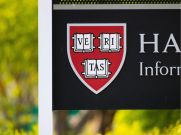Is higher education at that proverbial tipping point where large scale change is imminent? If the number of recent books on that topic is any indication, look out below. As Peter Sacks stated in opening his recent essay at Minding the Campus, “College bashing is very much in vogue.”
 One of the latest books in the critical higher education genre is Professor Mark Taylor’s Crisis on Campus: A Bold Plan for Reforming Our Colleges and Universities. The book received a lukewarm review in the Wall Street Journal on August 31, although it comes on the heels of
One of the latest books in the critical higher education genre is Professor Mark Taylor’s Crisis on Campus: A Bold Plan for Reforming Our Colleges and Universities. The book received a lukewarm review in the Wall Street Journal on August 31, although it comes on the heels of
Among his better points,
While there is value in keeping some classical disciplines intact (math, physics, biology, etc), I have firsthand experience with the detrimental effects of a lack of integration. I place a huge premium on reading comprehension and written communication in my courses. Yet, my ability to influence my students is only as strong as the standards that are held in other courses that they take. For example, students in my course realize that developing a thought on paper is essential for a high grade, while in other courses, they can achieve the same grade with less coherence in their written work. In essence, I’m the grammar Nazi for students that semester. With a better, more organized curriculum, the same standards would apply throughout students’ college careers. As a teacher, I could expect more from my senior students if I could rely on the instructors in introductory classes to stick to a program that integrates with the curriculum as a whole.
Unfortunately, the focus on performance evaluation that
Tenure may be abolished at some point, but in the near term, a more rational change would be what Bob Samuels recently proposed in the Huffington Post - the development of three categories of professors: those who teach, those who do research, and those who do both. This suggestion falls in line with my Aikido-based mindset of working with transmitted energy vs. fighting it – if productive researchers want out of the classroom, there should be an opportunity for them to do so in order to focus on more research. Similarly, truly outstanding teachers who want to develop new courses and innovative teaching methods in place of a certain number of publications should be able to do so as well. If a college faculty were a baseball team, such a division of labor would be called playing to strengths. A light-hitting infielder is not expected to hit 50 home runs and a power-hitting designated hitter is not expected to drop a sacrifice bunt with runners on base. Yet, both roles are needed for a successful team. Why should educating our children be any different?
A third piece of “bold” reform advocated by
Last week a junior major in religion at
I agree with the idea that students should be trained to leverage new technology, but such training cannot substitute for the fundamentals of reading and writing. For students who have already mastered the basics of the written word, the multimedia option is beneficial for expanding their portfolio of skills. However, from experience, telling the average undergraduate student to “make sure your ideas are well thought out and rigorously developed and your work is carefully crafted to shed new light on the questions you probe” means the same to many of them as saying “toaster fork pen up carpet window car sidewalk Starbucks dandruff poppy seed.”
Student apathy towards academic work is a growing problem in American education. Many of my (stronger and weaker) students readily admit that they do not read anything outside of assigned work, and they disclose that information without a twinge of embarrassment. They don’t see that such intellectual apathy is unacceptable for a truly college educated person. For them, college is now for “getting a job” and “hands-on training,” not book learning. Hence,
Ultimately, the reforms presented in Crisis on Campus lead to the question, “Are all students educable at the college-level?”
Readers interested in opposing angles on college reform would benefit from reading
In the end, Crisis on Campus is worth reading, as it contains some worthy points in both the assessment of the state of higher education and in the recommendations for change, but much of this book is not as “bold” as the title suggests. I was expecting KC Masterpiece, but instead I got a mild store-brand blend.













